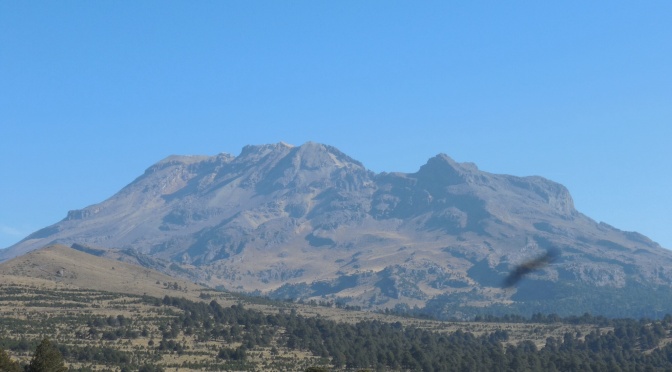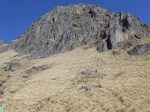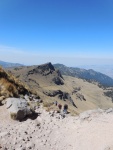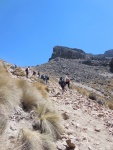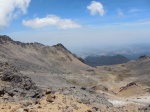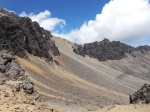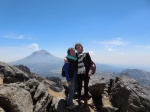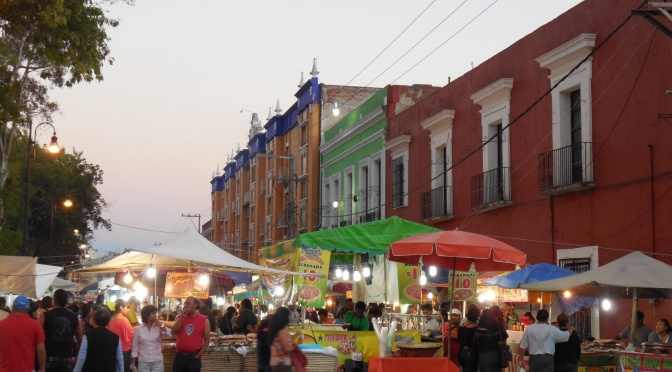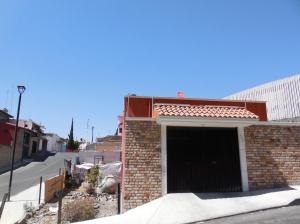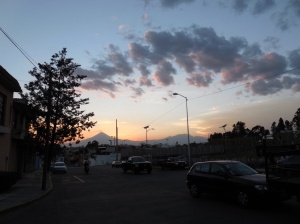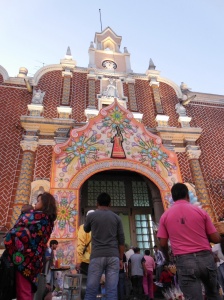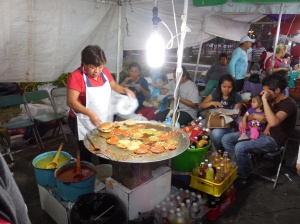*I lied. It’s not itsy bitsy at all, it’s enormous. Iztaccíhuatl stands at 5286m above sea level and is Mexico’s third highest peak after Pico de Orizaba (5636m) and Popocatépetl (5452m).
Just as a guide for size, here’s a comparison with some of the world’s other Really Big Hills:
Britain’s tallest rock formation Ben Nevis (it’s a mountain, we haven’t had any volcanoes in Great Britain for the last 60 million years) is 1344m high.
Mount Etna, Europe’s tallest active volcano, was last measured as 3329m high.
Kilimanjaro, Africa’s highest mountain (a dormant volcano), reaches 5895m.
Iztaccíhuatl and Popocatépetl (Izta’s next door neighbour) form part of the Pacific ‘Ring of Fire,’ a large series of volcanoes which encircle the Pacific Ocean to form an area notorious for dramatic eruptions and violent earthquakes. The Ring of Fire is shaped like an upside down horse shoe, stretching from New Zealand up the East coast of Asia, and down the West coast of the USA and South America.
The most active volcanoes in Mexico are found along the Trans-Mexican Volcanic Belt (known locally as Sierra Nevada), spreading 900km from West to East across central-southern Mexico. Popocatépetl is a particularly feisty one, last erupting on the 11th of July 2013. Iztaccíhuatl, however, is craterless and dormant, and open for exploration.
We were dropped off at 3990m and walked/crawled the La Joya route up to just below 5000m. To go any higher requires an overnight stay for acclimatisation. One day was absolutely enough for me! It was hard, really hard: the terrain was steep, rocky and unstable. The altitude wasn’t as much of a problem as I had feared and with regular breaks I managed to scrabble my way up without any major disasters. But after a 45 minute rest at the top spent admiring the incredible views, my legs decided that they’d had enough, and were rather reluctant to get back to work. The descent was a challenge. At times it was like sand-skiing without skis, and our boots required regular tipping. We were trying to go as fast as we could to get it over with, but jelly legs made me feel like a clumsy octopus and it was too treacherous to go too quickly. I’ve never felt exhaustion like it, and it’s the only time I’ve ever really felt like my body was totally at odds with my will.
After six and a half hours we were very, very happy to see the base camp. Too tired to be jubilant, only rest and relief occupied my thought stream for the next few hours; I’m not sure if it was the heat or the altitude, but I felt very nauseous for the entire three-hour journey home.
It was simultaneously a lot of fun and really awful. More fun than awful, I think, although my thighs are currently telling me otherwise. In a strangely masochistic way, it’s precisely because it was so awful that it was also so much fun?!
Am I glad I did it? Of course! Would I do it again? Give me some time to forget the pain…

